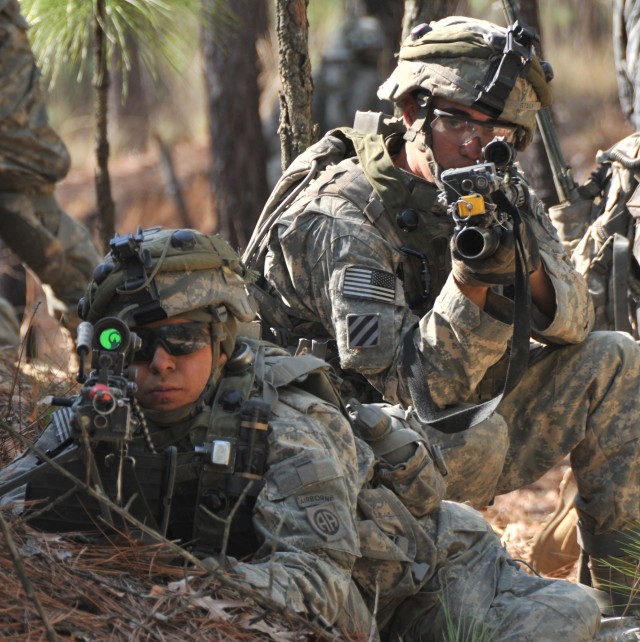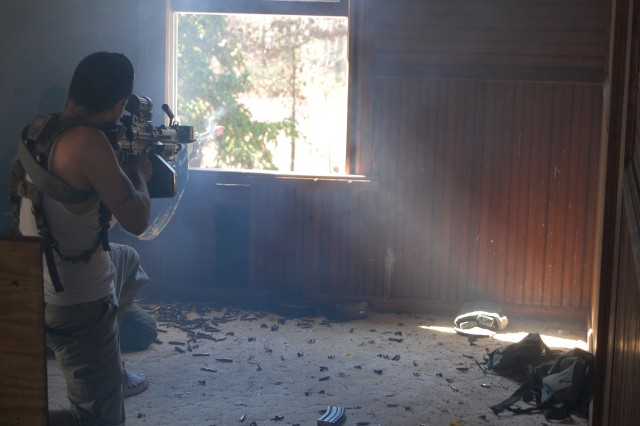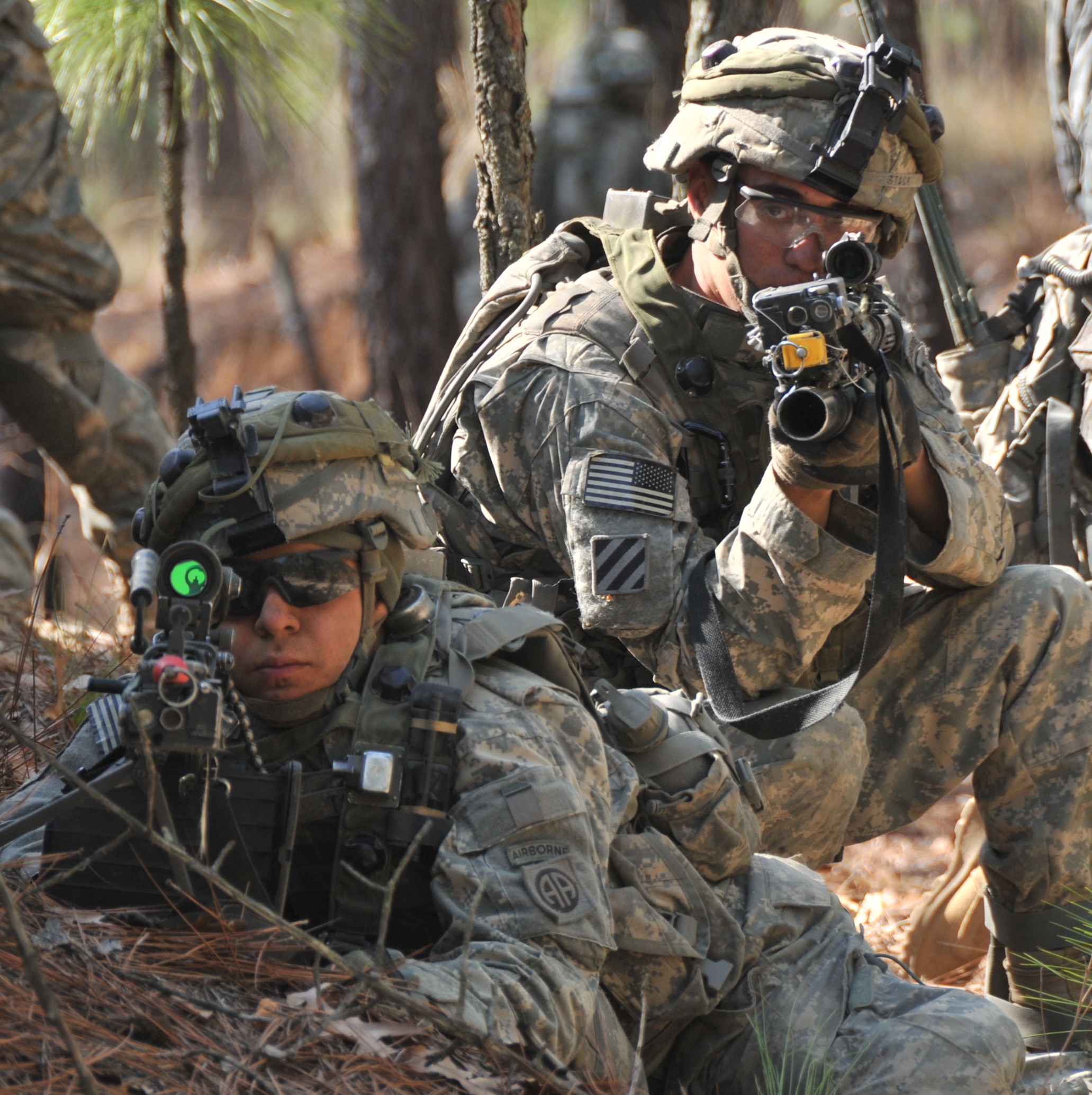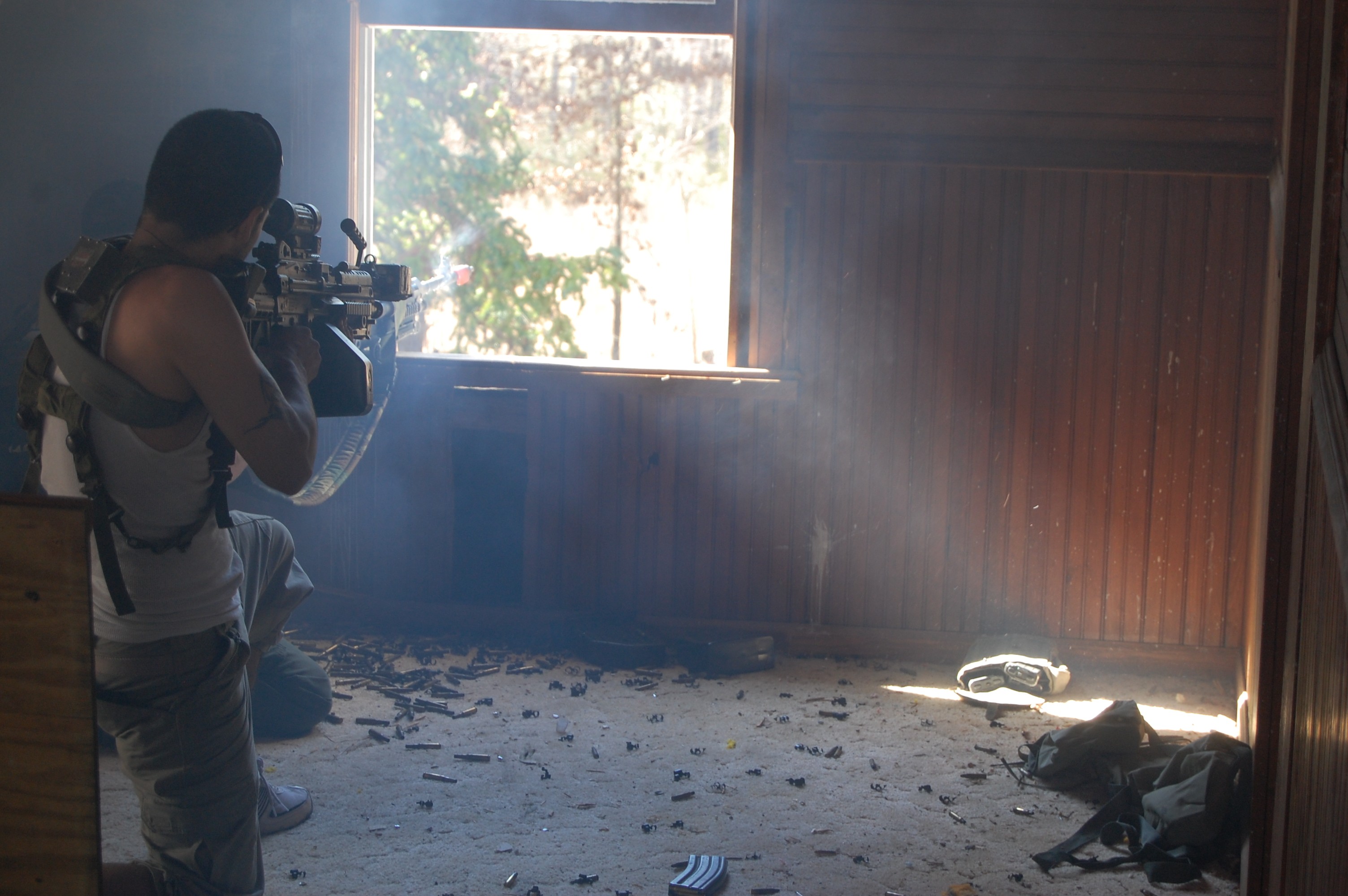GRAFENWOEHR, Germany - When units report to the Hohenfels Training Area in Hohenfels, Germany, with a set of training objectives, things their brigade commander or their senior-trainer says they have to execute before they deploy to Iraq or Afghanistan, the Joint Multinational Readiness Center (JMRC) prepares the training environment, and then they facilitate the execution of that training.
This time, the JMRC packed up its Exportable Instrumentation System (EIS) to test the Army's Exportable Training Center (ETC) concept, while training Soldiers from the 82nd Airborne Division's, 2nd Brigade.
Testing the ETC meant moving JMRC capabilities, personnel and equipment to Fort Bragg, N.C., "Home of the Airborne." JMRC provided a professional staff of observers and controllers, a dedicated opposing force, and instrumented after-action reviews.
The Army's first ETC based in the Contiguous United States (CONUS) will be located at the National Training Center in Fort Irwin, Calif.
"With an increase in the number of Brigade Combat Teams (BCTs) and our current dwell time between missions, Combat Training Centers are hard pressed to provide all BCTs with a CTC rotation prior to deploying for combat or other missions. The Exportable Training Center (ETC) concept is designed to make up that difference by deploying the training personnel and equipment to an installation, and training the unit at their home station," said Maj. Nick Sternberg, the JMRC spokesperson. "Our goal was to deploy and execute a training event that would challenge the Commanders and Soldiers, while also meeting the unit's training objectives."
Planning for the rotation began in early 2006, when the Army G3 granted the JMRC with both fixed site and exportable responsibilities. By the end of 2006, the HQDA G3 directed U.S. Forces Command (FORSCOM) and U.S. Army Europe Command to initiate coordination to conduct CONUS Training using the EIS. After two postponements, in June 2008, the 2nd Brigade Combat Team, 82nd Airborne Division, stationed at Fort Bragg, N.C., was identified as the unit to be trained in March 2009.
"The ETC is a unique training experience for 82nd Soldiers because it provides an external assessment for the BCT at home station. We bring professional observer controllers, who can provide feedback the same way we do in Hohenfels," said Sternberg. "It is a unique experience for the Joint Multinational Training Command, the Army's training command in Europe, and the JMRC because we deployed equipment from OCONUS to CONUS, from Europe to the United States."
The JMRC, a subordinate command of the JMTC, plans, coordinates and executes mission-rehearsal exercises to prepare units for major combat operations, irregular warfare and, security and stability operations in the European Command and Central Command areas of operation.
"The JMRC observers/controllers, opposing forces, civilian role-players, analysts and technicians usually train forces from the United States, stationed in Europe, and units from allied nations bound for peacekeeping missions or combat in Iraq and Afghanistan," said Maj. Brad Eungard, the Operations Group's logistics officer, "So going to Fort Bragg to facilitate the training of the 82nd's, 2nd Brigade for their upcoming mission requirements was a first for us and the Army."
Moving the JMRC to Ft. Bragg meant moving 600 personnel, in addition to the equipment.
It was the first time the Instrumentation Training Analysis Computer Simulations and Support team (ITACSS) trained a brigade-sized unit solely using the EIS. Normally in Germany or elsewhere in Europe, the EIS, opposing forces and ITACCS technicians usually only have to deploy with enough equipment to train up to a battalion, said Eungard.




Social Sharing